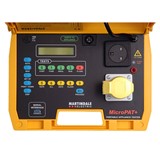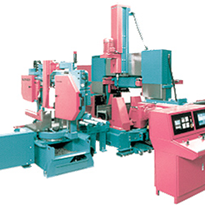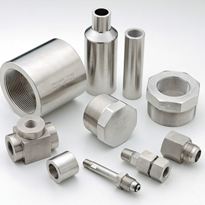While a downturn poses a risk to any business, SME (small and medium enterprises) business owners may not have the financial backing, capital assets and resources to get them through the difficult times.
With so much to be done on a day-to-day basis to run a successful transport business or manufacturing plant, recession-proofing is often not on the top of the to-do list. However, if you plan ahead and have business practices in place to protect against a downturn, it opens up a rare opportunity to outperform rivals.
Putting steps into place to protect against the loss of jobs, a decline in profit, a slowdown of production and manufacturing and a decline in consumer spending can help your manufacturing or transport business survive the storm of a downturn.
Customer is king
Often businesses are not prepared for an unexpected loss of their biggest client or contract. It you want to survive a downturn, you need to know the value of your customers and clients, the products and services they access and how frequently, and the changes you can make to your offering without losing your loyal customers.
Understanding your client base will help you focus on the ways you can increase the customers you have, but also tap into the potential profit that comes with providing added value to existing customers.
Take the time to research your competition and see what you can offer to entice their customers to move across to you, whether that be through providing added value or a product or service that is different to what competitors offer. Also look at the way that you deliver service and your products to see how you can increase the value you provide to current customers. It’s more affordable to keep current customers than it is to secure a new customer.
Plan for the worst
Do you have a strategic plan in place for your manufacturing or transport business that can help you navigate through any problems that may arise? Is it a ‘live’ document that evolves as your business does?
Stepping back to look at your business can help you evaluate your current practices and give you a stronger understanding of the direction your operation is headed in. Stress-test your business by bringing your management team together to discuss how you would cope in various scenarios, for example if key customers were to suddenly leave. Use these strategic meetings to determine best practice actions to get you through the tougher times and start putting these into place to reduce potential impacts in the future.
Thriving in what can be a challenging industry requires a lot of forward-thinking and any actions you take today should reflect a long-term vision that puts your business in a positive position should there be an upset in the economic cycle. Remember to review the plan you have in place so it continues to be in line with your business’ goals and circumstances.
Stay true to what you do best if it will bring you the most profit
While the business is thriving, profits from your core business may make it easier to be innovative and experimental with the products and services that you offer. However, when times are tough you need to review whether these new offerings are benefiting your business, are in demand from your current client channels and are sustainable.
Diversifying your offering can take you too far away from what made your business successful in the first place. Worse, it can take time, money and resources away from what you do best and potentially damage your reputation.
Take the time to review your business values and the products/services that best provide for your bottom line. Dropping the extras and focusing on the most profitable service/product might be the best option to get you through a downturn.
Protect your cash flow
Solid financial management is vital if your business is to survive during a downturn. Understanding your financial situation previously, now and into the future will tell you the truth about how your business is performing and allow you to recognise the early warning signs that trouble is brewing.
Create a system (whether through an outsourced professional or internal software or resource) that allows you to consistently monitor the cash flow coming into your business and how that lines up with your expenses. This will help you better understand when payments are expected from customers and when supplier payments are made so you can plan for periods of tighter cash flow or projects that might impact your financial position. It will also help you see where you can cut costs to protect your manufacturing or transport business during challenging times.
Inventory management – don’t just stick to what you know
Inventory management is one of the most important parts of a manufacturing or industrial business. While it’s easy to keep ordering from a particular supplier or consistently purchasing a set number of products each order, during a downturn you might find that there are ways that you can reduce costs by cutting unnecessary quantities and sourcing cheaper suppliers without sacrificing quality.
Review your current inventory management practices so you can track and optimise your approach to help save money in tougher times.
Downturns can come and go and some may be more severe then others. While they create a financial headache for any business owner, they also present an opportunity to review how your business performs under pressure and the actions you need to take in the future to better protect your manufacturing and transport business against potential financial pressures from downturns in the future.
Another way that you can protect your business is by focusing on quality and reliable equipment in your manufacturing warehouse or transport business. ovesco services the industrial and transportation, manufacturing and repair industries with Australia’s best products, solutions and service.
Click here to view our 4,000 products that include hinges, locks, latches, catches, drawer slides, tool boxes, water tanks, gas struts, rubber seal, sealants, adhesives, safety products and more.



















